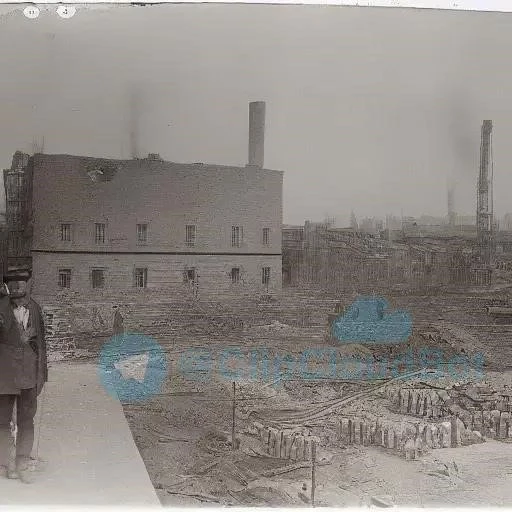The year 1900 marked a fascinating turning point in architectural history, witnessing a blend of traditional techniques and the burgeoning influence of industrial innovation. Houses were not just shelters, but reflections of societal values and technological advancements. Understanding the building materials used in 1900 provides a unique glimpse into the construction practices, design aesthetics, and economic realities of the era. The prevalent choice of building materials used in 1900 also significantly impacted the longevity and style of the buildings that still stand today, offering valuable insights for preservation and restoration efforts.
Common Building Materials
The turn of the century saw several materials dominate the construction landscape. Here are some of the most prevalent:
- Wood: Still a widely used material, especially in residential construction; Framing, siding, flooring, and decorative elements often utilized various types of wood, such as pine, oak, and redwood.
- Brick: A durable and fire-resistant option, brick was commonly used for walls and foundations, particularly in urban areas. Different colors and textures of brick provided visual interest and stylistic variation.
- Stone: Granite, limestone, and sandstone were popular choices for foundations, walls, and decorative features, particularly in grander buildings. Stone offered a sense of permanence and solidity.
- Concrete: While still in its early stages of development, concrete was gaining traction as a versatile and cost-effective material. Its use was primarily limited to foundations and some structural elements.
- Steel: The rise of the steel industry revolutionized construction, allowing for taller and more complex structures. Steel framing became increasingly common in skyscrapers and other large buildings.
Innovations and Emerging Trends
The late 19th and early 20th centuries were a period of rapid technological advancement. These innovations influenced the materials and methods used in construction:
- Portland Cement: Improved production methods made Portland cement more readily available and affordable, leading to increased use of concrete.
- Mass-Produced Lumber: The development of sawmills and efficient transportation networks made lumber more accessible and uniform, facilitating faster and more standardized construction.
- Steel Production: The Bessemer process and other advancements in steelmaking led to lower costs and higher quality steel, further promoting its use in construction.
Comparative Table: Wood vs. Brick
| Material | Advantages | Disadvantages |
|---|---|---|
| Wood | Relatively inexpensive, easy to work with, aesthetically pleasing | Susceptible to fire, rot, and pests; requires regular maintenance |
| Brick | Durable, fire-resistant, low maintenance | More expensive than wood, heavier, requires skilled labor |
The Influence of Architectural Styles
The choice of building materials used in 1900 was also heavily influenced by the prevailing architectural styles of the time. For example, Victorian architecture often incorporated intricate wood detailing, while the emerging Prairie School favored natural materials like brick and stone. The desire to emulate historical styles also played a role, with many buildings incorporating elements reminiscent of classical Greek or Roman architecture.
The legacy of these early building materials used in 1900 continues to shape the built environment today, reminding us of the ingenuity and resourcefulness of past generations. Understanding these materials and their properties is crucial for preserving our architectural heritage and informing future construction practices.
Preservation Challenges
But what about the challenges of preserving these structures built with materials from 1900? Are we adequately equipped to repair and maintain buildings constructed with techniques and materials that are increasingly unfamiliar to modern builders? What happens when original materials are no longer available, and replacements must be sourced? Can we truly replicate the aesthetic and structural integrity of these historic buildings with contemporary substitutes? Doesn’t finding skilled artisans who possess the knowledge and expertise to work with these traditional materials become increasingly difficult and costly?
Sustainability Considerations
And shouldn’t we also consider the sustainability of these older building materials? Were the harvesting and production methods of 1900 environmentally sound by today’s standards? What about the embodied energy of these materials – the energy required to extract, process, and transport them? Is it more sustainable to preserve existing buildings constructed with these materials, or to demolish them and build new structures with modern, eco-friendly alternatives? Does the long lifespan of some of these materials, like stone and brick, offset their initial environmental impact? Surely, these are crucial questions as we strive for a more sustainable future.
Modern Adaptations
How can we adapt these older buildings to meet the demands of modern living? Can we effectively insulate them without compromising their historical character? Is it possible to integrate modern amenities like central heating and air conditioning without damaging the original fabric of the building? What about accessibility – how can we make these buildings accessible to everyone while preserving their architectural integrity? Don’t these adaptations require careful planning and innovative solutions that balance preservation with functionality?
Ultimately, aren’t we tasked with a delicate balancing act? How do we honor the past while embracing the future? Can we learn from the construction practices of 1900 to inform our own building methods? And most importantly, how do we ensure that these historic buildings continue to inspire and serve future generations?


